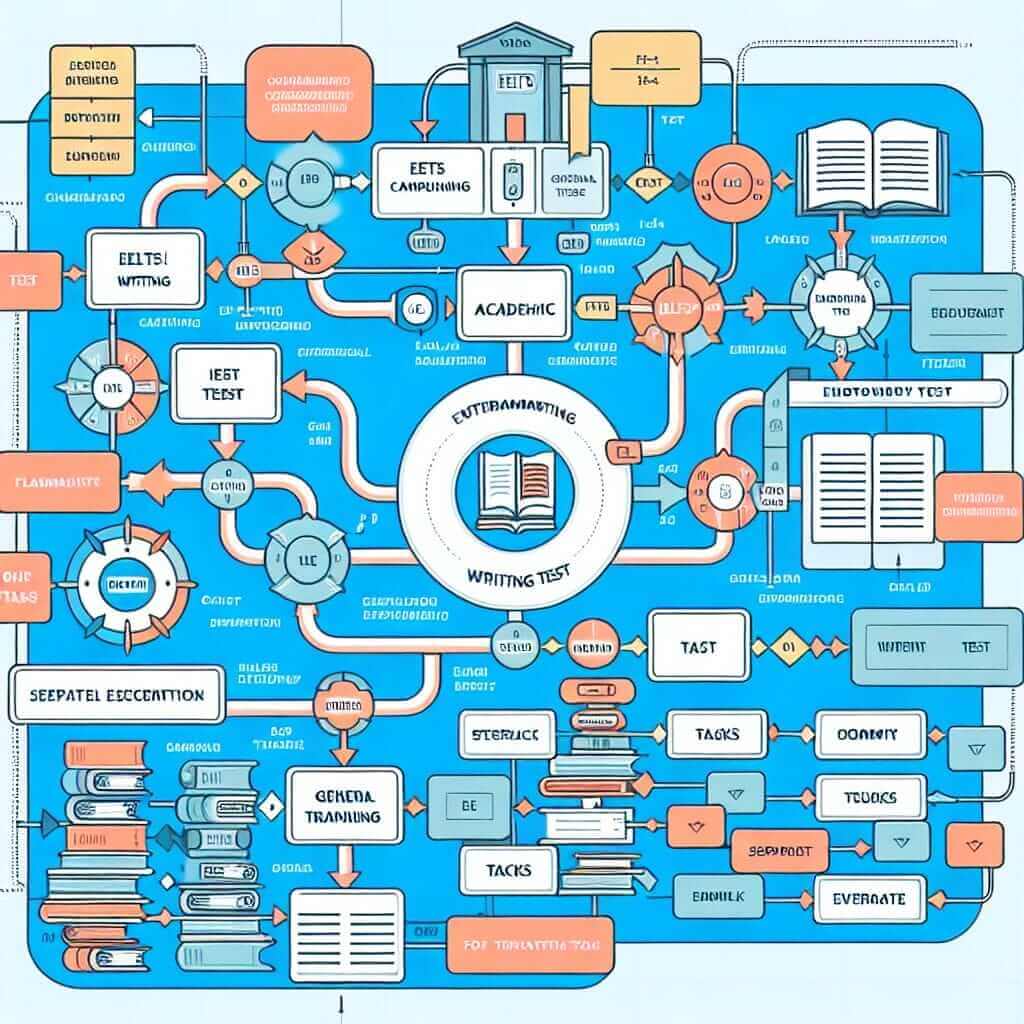The IELTS Writing Test is an essential component of the IELTS exam, intended to assess a candidate’s writing abilities in English. This part of the test plays a crucial role in determining your overall IELTS score, and understanding its format can significantly impact your preparation and performance. In this article, we will delve deeply into the IELTS Writing Test format, providing examples, analysis, and practical advice.
Understanding the IELTS Writing Test Format
The IELTS Writing Test consists of two tasks that candidates must complete within 60 minutes. Both the Academic and General Training versions of the IELTS have the writing test, but with slight differences in task specifics.
Task 1: Description of Visual Information
Academic Version
In the Academic version, Task 1 requires candidates to describe visual information presented in graphs, charts, tables, or diagrams. The aim is to test your ability to summarize and report on data.
Example 1:
You may be presented with a bar graph showing the average monthly rainfall in different cities. Your task is to describe the trends, compare data, and, where relevant, provide explanations.
Example 2:
A process diagram might depict the stages in the water purification process. You will need to write a report summarizing the stages and explaining how the process works.
Common Mistakes:
- Misinterpreting data or focusing on minor details rather than overall trends.
- Including personal opinions instead of sticking to factual descriptions.
General Training Version
For the General Training version, Task 1 involves writing a letter. This could be informal, semi-formal, or formal, depending on the prompt.
Example 3:
You may be asked to write a letter to a friend about a recent holiday you took.
Example 4:
Another task might involve writing to a landlord to address issues with your apartment.
Common Mistakes:
- Not adhering to the appropriate tone and style for the specified letter.
- Ignoring the letter’s purpose and not addressing all the prompt’s points.
Task 2: Essay Writing
For both versions, Task 2 is an essay-writing task that requires a response to a given prompt.
Academic and General Training Versions
While the topics may vary, the structure of Task 2 remains consistent across both versions. The task tests your ability to construct coherent arguments, support ideas with evidence, and write in a formal academic style.
Example 5:
Discuss the advantages and disadvantages of a cashless society. Provide arguments and relevant examples.
Example 6:
Some people believe that education should be free for everyone at all levels. Discuss both sides and give your opinion.
Common Mistakes:
- Failing to develop a clear argument and structure.
- Not providing sufficient supporting evidence.
- Poor time management resulting in incomplete essays.

How to Apply the Knowledge in IELTS Writing Test
Understanding the format is only the first step. Here’s how you can effectively apply this knowledge:
Planning and Structure
Task 1 (Academic):
- Introduction: Briefly describe what the visual data is about.
- Body Paragraphs: Highlight the most significant trends, contrasts, or processes.
- Conclusion: Summarize key points if necessary.
Task 1 (General Training):
- Salutation: Begin with appropriate greetings.
- Introduction: State the purpose of the letter.
- Main Body: Develop your points, providing examples where necessary.
- Conclusion: Sum up your letter and include any final remarks.
- Closure: Sign off appropriately.
Task 2 (Both Versions):
- Introduction: Introduce the topic and state your opinion or approach.
- Body Paragraphs: Develop each main point in separate paragraphs with examples.
- Conclusion: Summarize your arguments and restate your opinion.
Practice Regularly
Importance of Practice: Regularly practicing both tasks under timed conditions is crucial. This helps improve time management and enhances your ability to articulate thoughts clearly.
Example Exercises:
- Choose random bar graphs or pie charts from reliable sources like newspapers and try writing a 150-word descriptive report.
- Write letters and essays based on sample prompts from IELTS preparation books or online sources.
Conclusion
The IELTS Writing Test format is a critical aspect to master for anyone aiming to achieve a high score. By understanding the structure, practicing regularly, and avoiding common mistakes, you can significantly enhance your writing skills. Remember to analyze each task carefully, plan your response, and practice diligently. Good luck!
Feel free to leave any comments or questions below, and explore more detailed guides on our website to further enhance your IELTS preparation journey.